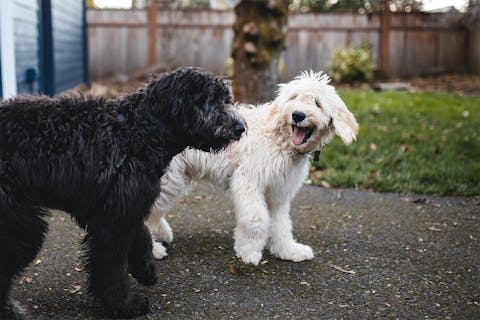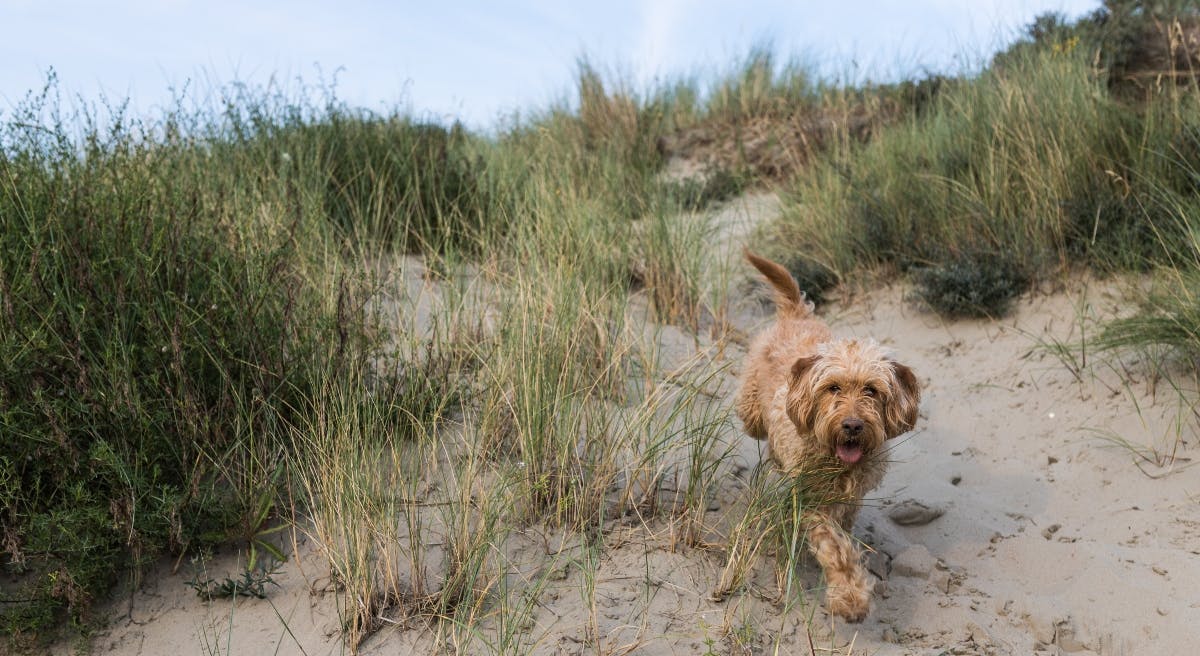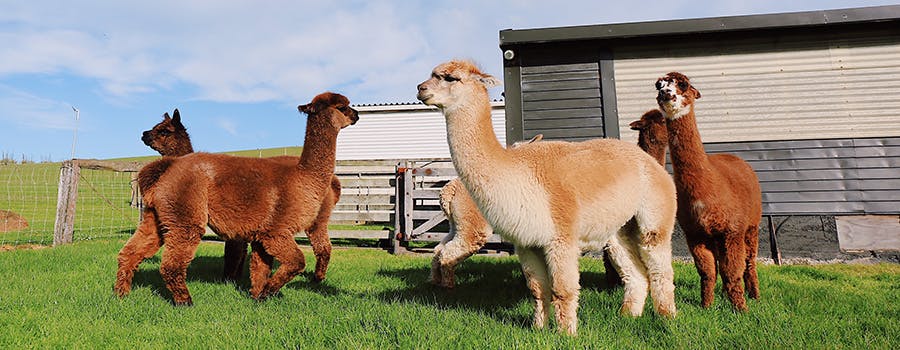Updated 4 Aug 2025
Want to get started with your dog’s recall training? You’re in the right place! Below, find a guide on how to train a dog to come when called - an essential part of your dog’s training journey. Find tips, ideas and recall games, and your dog will soon be a whole lot safer when you’re out and about.
How to train a dog to come when called: top tips
Start at home
When learning how to teach a dog to come when called, start small at home in a constrained, distraction-free environment. Once your dog has had a sniff around, they’re likely to come to you to say hello. Once your dog starts to move towards you, praise them.
Choose a high-value treat
When starting out on your dog’s recall training journey, choose a high-value toy or treat to reward them with when they come to you. This positive reinforcement will help them associate you with something they love. The aim here is to show your furry friend that being close to you is rewarding in itself.
Add a verbal cue
Once you’ve rewarded your dog a few times for coming to you, add in a verbal cue such as ‘come’. Do this every time they come towards you to help them associate the word with coming back to you. Remember, keep rewarding them when they recall.
Practice daily
Like with any part of your dog’s training, you’ll need to practice recall everyday until they get the hang of coming back to you when they hear the verbal cue. Remain patient and don’t let your dog off the leash until you’re confident in their recall.
Start in an enclosed outdoor area
Once your dog comes back to you at home, it’s time to move out into a slightly more distracting area, such as your back yard. Use a recall leash so that they can get used to it before venturing out. Call your dog and reward heavily when they come back to you.
Test their skills in a dog park
Using your long leash, have a go at recall in a dog park - a much more distracting environment than your home. After some practice and once you’re confident they’ll come back, try recall without a leash. At this stage, it’s really important to avoid putting your dog on the leash and taking them home once you’ve called them over, as this will teach them that this is the end result. Most dogs don’t want the fun and games to be over, and doing this can lead them to associate the recall cue with something negative (aka hometime).
Take it slow
Learning new skills takes time, and it’s important to be patient with your dog during training sessions. Never show signs of frustration - this will lead your dog to associate recall training with negativity.
Be consistent
Complete short, regular training sessions with your buddy and get the whole family involved so it’s not one rule with you and another with someone else.
Trending posts
Purr-use some of the top blogs our members have been loving this month- Top male dog names for your new furry friendGot a new furry family member in your pack? Check…

- Top female dog names for your new fluffy palWelcoming a new pooch into your family? Explore…

- 250+ gray cat names your silver feline will loveRecently welcomed a fluffy gray bundle of joy into…

- What are normal pet sitting rates?Discover the average pet sitting rates for animals…

- Unique dog names to stand out from the packDare to be different with our list of the best…

Dog recall training games
Teaching dogs recall can be heaps of fun! Find a few recall training games below that’ll have your dog learning without even realizing.
Catch
Go for a walk with your furry friend on a long leash. Get their attention and call out your recall cue before running a few steps ahead. If your pup runs after you, remember to give them lots of praise and a tasty treat.
Hide and seek
If your four-pawed pal’s got to grips with recall training at home, you could up the ante by hiding somewhere in your house and then calling out your verbal cue. Your dog should come running and of course, they deserve a reward once they find you!
Fetch
Telling your furry friend to “come back” during a game of fetch teaches them how to keep the game going (and saves your legs!). Don’t forget to reward your dog by tossing the ball again.
Why is your dog’s recall training important?
Recall training for dogs teaches them to drop what they’re doing and run over to you when called. It’s a crucial part of the training process, and in an ideal world, a dog with “reliable recall” skills will come when called 99% of the time.
Whether your pup’s got a taste for other people’s picnics or adventuring solo, it’s an important skill to teach your dog to ensure both their own safety and the wellbeing of those around them.
And if you ever choose to welcome an in-home pet sitter, tell them all about your dog’s recall training and whether you’re happy for your sitter to let your dog off the leash.
Things to avoid during your dog’s recall training
If you’re having trouble teaching your furry friend to come, there’s a chance you may have “poisoned” the verbal cue. This can happen for a variety of reasons:
Negative associations
It’s widely understood that physical punishment has no place in dog training, but you may be punishing your pup without even knowing it. A common mistake many pet parents make is calling their dogs to come, then putting the leash straight on and heading home from the park. If your dog associates your recall cue with an end to all the fun, this will seem like a punishment to them.
Overuse of verbal cue
If your dog hears the same word time and time again, it can become meaningless to them and they may end up ignoring you.
Unclear meaning of the verbal cue
If the cue isn’t practiced time and time again, the meaning can get lost at some point along the way.
If you’ve accidentally “poisoned” the verbal cue, you may need to go back a step in the training process or switch the word you use. If you decide to replace the recall cue with something like “here” or “close”, go back to the very first step and re-teach your dog, this time avoiding any of the mistakes you made previously.
Dog recall training is an important part of ensuring your furry friend’s living their best life. Mastering this skill enables them the freedom to explore off the leash without pet parents or dog sitters having to worry about where they’ve gone or what they’re up to. If you’re interested in enlisting the help of a professional dog trainer, check out our guide to finding local puppy training classes.

